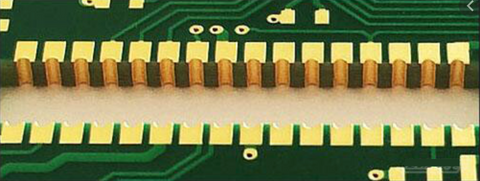Plated half-hole or castellated-hole, is a stamp-shaped edge through cutting in half on the outline. Plated half-hole is a higher level of plated edges for printed circuit boards, which is usually used for board-to-board connections. This technology helps to minimize the entire size of the final product.
Most of the plated half-hole PCBs are small modules with high-density delicate pitch components. Compared to SMT and THT, board-to-board soldering is used to mount a single module board to another board. Then, plated half-holes become more prevalent in PCB manufacturing.

The applications and advantages of plated half-holes
Plated half-hole is an economic connection technology, which makes the PCB as a surface mount sub-assembly. For example, the Wi-Fi module or Bluetooth module can be used as an independent part to connect to another board during the PCB assembly process. Usually, plated half-hole is used to combine two PCBs with different technologies together. E.g., the complex microcontroller module is combined with a universal design PCB. But we need to know that if one board need to stack on top of another board by using plated half-holes, there are two requirements: the space between the two boards should be zero, and electrical contacts are needed, not just physical connection.
Plated half-hole provides flexibility in PCB design and smaller sizes without compromising quality. Besides, plated half-hole will improve the process reliability of PCBs through accurately milled. And it can protect the electroplating layer from mechanical damage. Therefore, the PCB with plated half-holes is widely used in industries such as high-end consumer electronics, computers, telecommunications, power, automobile, and industrial controls, etc.
